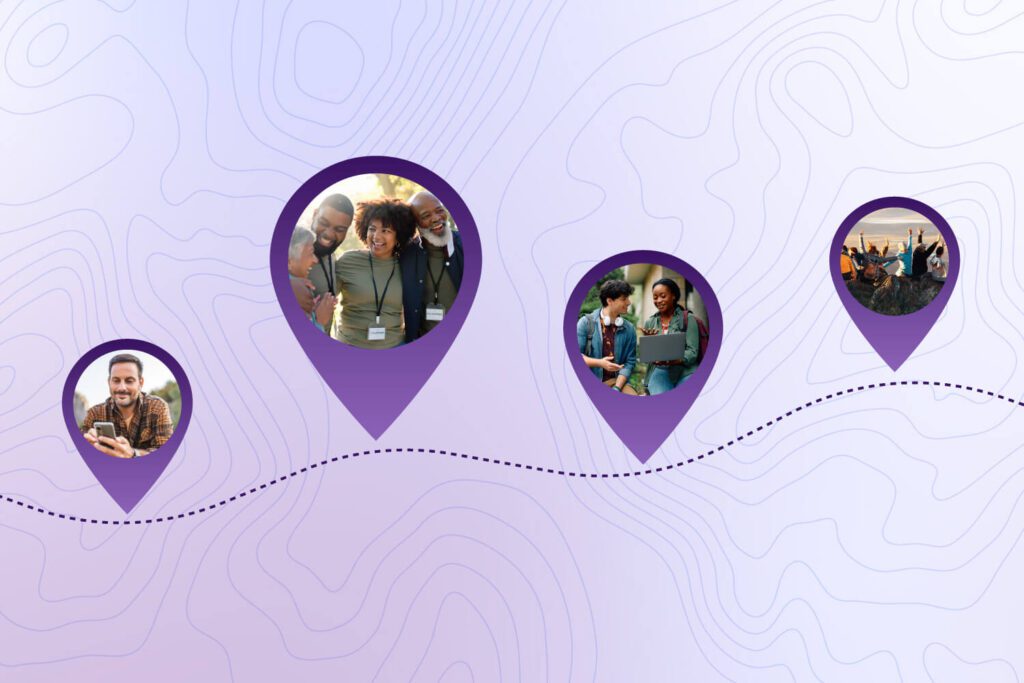Most nonprofit organizations regularly host fundraising and stewardship events in their community, and for good reason! Events not only drive donations, but also give your nonprofit valuable face-to-face time with supporters. Plus, you have the opportunity to further inform your community about your purpose and make connections with new supporters.
However, your organization has to effectively plan and execute the event in order to reach these goals, which includes getting the word out to your audience. The only way to build and develop relationships with your supporters is to be sure they know about and want to attend your event.
In this guide, we’ll dive into four best practices for nonprofit event promotion.
Email
Email offers new opportunities to get in touch with both existing and potential event participants. Use different messages depending on who you’re reaching out to so major donors and first-time supporters each receive tailored messages. Then, use tools like geofencing to target specific audiences by geographic location or retargeting tools to recapture those who visit your event site without registering.
1. Set goals for nonprofit event promotion
Before you can start promoting your event, you need to determine what the purpose of your strategy is. What are you trying to achieve by getting the word out about your event? Once you’ve determined this goal, you can start actively marketing your nonprofit’s event opportunities to your target audience. Some of the goals that nonprofits may work toward as a part of their event promotion include the following:- Gain sponsorships. Sponsorships often come from companies or mid-tier and major donors at your organization. These conversations should occur long before the event itself to secure the sponsors before the event begins.
- Encourage registrations. If your goal is to create new relationships with supporters through attendance, spreading the word about your event throughout the community will be a vital part of your promotional strategy.
- Attract donations. If revenue is your top priority, you might consider hosting and promoting a more donation-centered event, like an auction or gala, to garner an audience willing to give to your cause.
- Recruit volunteers. If your event relies heavily on volunteers, you’ll need to start recruiting early in the marketing process. Begin as soon as your event details have been fleshed out, explaining your goals to past and potential new volunteers.
2. Determine who your target audience is
You will likely have several target audiences and goals for each type of event. For example, if your goal is to engage mid-to-upper-level supporters, you might promote your event’s VIP packages and provide them with exclusive opportunities at the event itself. Consider the following audiences that you might be trying to reach:- In-person attendees: In-person attendees will likely be those within your organization’s community. Therefore, you might decide to hang flyers or leverage geofencing to get your message in front of locals.
- Virtual attendees: Hybrid events are here to stay, as they meet the widest range of donor preferences. To reach this audience, leverage a virtual platform like social media, virtual event fundraising software, or conferencing software to meet supporters where they are and make it easy to attend your event.
- Event sponsors: Sponsorship is a major decision that warrants more than an email. Set up meetings to talk to decision-makers and major supporters in-person or over Zoom.
- Event volunteers: Ask your past volunteers if they would be willing to volunteer again, then ask around in the community. Focus on finding those that care the most about your purpose by making it the center of your marketing strategy.
- Major donors: If you’re hosting a gala or an opportunity for major supporters, keep the event exclusive and only send invitations to major donors and prospects.
3. Choose nonprofit event promotion platforms
After you’ve identified your goals and your audience, you need to determine which platforms you’ll use to best reach those audience members. This is where the bulk of your strategy will be built. You’ll need to leverage a few different platforms for each audience to create multiple touchpoints and expose them to your event opportunities several times. Consider these platforms:Digital advertisements
Advertisements can be incredibly useful, especially when reminding your supporters of their interests. Leverage advertisements across the internet to make sure your event information reaches your supporters on numerous occasions leading up to the event. One great use of nonprofit advertising is to retarget those who previously showed interest in your event. If a volunteer lands on the volunteer page, but never signs up, you can make sure they see branded advertisements about volunteer opportunities as they continue wandering the internet. The same is true of your donors, sponsors, and attendees.Social media
Social media offers a wide variety of features for nonprofits to utilize. Use groups, advertisements, reels, posts, and direct messages to spread the word about the opportunities your organization has to offer. Leverage images and videos to capture and hold audience attention. Then, always link to the next action for them to take, whether that’s to sign up as an attendee, donate in support of the event, or register to be a volunteer.Peer-to-peer fundraising
Peer-to-peer fundraising is a great way to engage your supporters, raise money for your purpose, and get the word out about your event all in one strategy. Ask those who have the strongest voices for your cause to create their own fundraising pages. These may be your event speakers, your board members, or simply well-known supporters. As these key supporters spread the word about their fundraiser, more people will see the nonprofit they represent, raising greater awareness about your organization. They can ask for donations while simultaneously providing the link to your registration page and encouraging others to attend the event.4. Prewrite messages for various platforms
Tailor your messages to different platforms based on the unique best practices and conventions of each channel. For instance, long-form content generally performs well on Facebook, over email, or on your website. Meanwhile, simple one or two-sentence reminders are well-leveraged for advertisements. Plan out your messages for each platform and audience ahead of time. Then, when it’s time to put the message out there, all you need to do is tweak it slightly and hit “send.” Some of the strategies to consider as you write your messages include:- Leverage FOMO. Fear of missing out (FOMO) is a great way to encourage people to sign up for an event. For example, try leveraging a limited-time discount. Saying, “Prices rise in March!” is a great way to encourage early registrants because they’re afraid to miss the discount.
- Use images strategically. Include an image of supporters having a great time at the event last year or an image that reminds viewers of the purpose they’re supporting by attending.
- Promise a good time. Find the balance between telling purpose-driven stories and promising your supporters a good time. It should be clear through your marketing efforts that they will both have fun at the event and help support your nonprofit’s initiatives.
Ready to Get Started?




